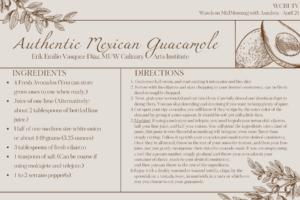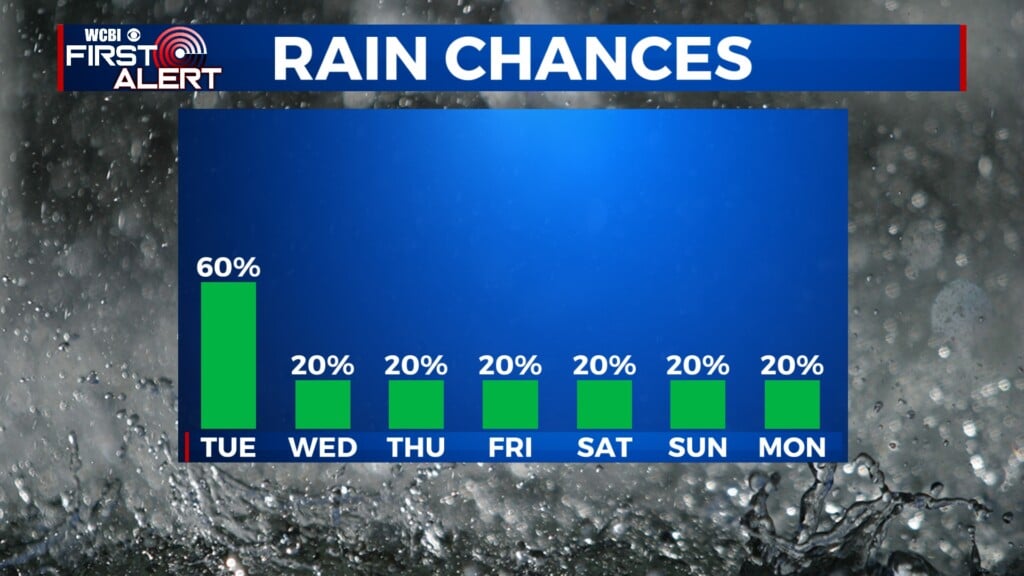MUW Culinary Arts Erik Emilio Vasquez-Diaz: Guacamole
You may order it off the menu, but preparing your own guacamole may seem intimidating.
Here’s Erik Emilio Vasquez-Diaz, a chef in training at the MUW Culinary Institute to show us how.
Erik Emilio Vasquez-Diaz:
“Hello, my name is Erik Emilio Vasquez-Diaz, and I come from Madison, Mississippi, and I’m a student here at The W, or the Mississippi University for Women,  or of Women. And I’m going to be showing you how to make a guacamole as authentic as possible from my family’s region of Mexico.
or of Women. And I’m going to be showing you how to make a guacamole as authentic as possible from my family’s region of Mexico.
We all have different variations, and some people may include tomatoes. Mine typically don’t, but one thing that is consistent is no garlic. And no and no lemon juice. You can save that for your avocado toast. Now, I’m going to start off with not this surprisingly enough. Instead, we’re going to take about half of our onions here. And this is about half of a medium-sized onion. It could be any onion. In this case, it’s a nice white. And we’re just going to be putting half of that in here. And if you’re somebody that likes to have a measurement, then that should be about 149 grams of it.
We’re also going to throw an hour sea salt, and this should be about one teaspoon’s worth, and it needs to be rough because if you’re using a and a, which is this instrument by the way, then you’re just going to need it to help grind up that onion. Along with that, we’re going to throw in our Serranos, or Serrano if you’re just using one. This is about two of them, and only one of them has been de-veined. I’m just going to throw that in there, real quick.
And then our cilantro, which should be about three tablespoons, fresh. And then follow that up with half of your lime juice. Should be about one whole lime or two tablespoons, if you’re only using the bottled stuff. Don’t be afraid to just use your hand. You can, of course, use a juicer if you want. Sometimes these can be a little bit tough. You’re just going to be starting to just mash this up in here. And by mashing this up, you’re going to be making a nice paste. And with this paste, you’re going to have a unique flavor that you might never, ever get with a food processor or by simply chopping things up. And this paste isn’t going to be just completely smooth, and don’t worry about that. It’s fine. It’s great to have texture.
Now, the reason why I’m using this and is just because, as I said, you’re going to have a lot of flavor being brought out, and this is because of the mashing motion. Think of it as just popping a bunch of bubbles of flavor. Slicing may pop some of those, but there’s a point where bubbles get too small. At least that’s what I tell myself to sleep at night.
Now, once you have this nice paste, you’re going to go ahead and throw in your avocados. And for this is about four fresh and ripe avocados. Make sure that they’re not too ripe. They may be a bit too soft. You might end up with something that might not taste as good or just might not look as good. But don’t be worried. Don’t be shy when it comes to some discoloration, it’s only natural. Old fruit gets rusty. And you’re just going to sit here, just mash it up to the consistency that you prefer. I prefer one that’s just kind of between chunky and smooth because I’m a fan of heterogeneity in my food.
Now, you may make a mess on your hands, which is of course just handy to have a nice towel to clean yourself up with. But don’t worry, what’s cooking without a little bit of a mess? And now that you have the consistency that you want, you can go ahead and throw in the rest of your onions. And by saving half of the onions, you’re actually just going to have just a nice bit of texture and a little bit of bite from that fresh onion.
And now with this, it should be done in all in order. From here, you can just go ahead, remove this, and start serving it up, say with some nice tortilla chips or maybe a fresh tostada or just a warmed up and toasted tortilla, or maybe in a sandwich, however, way you want to consume it.”




